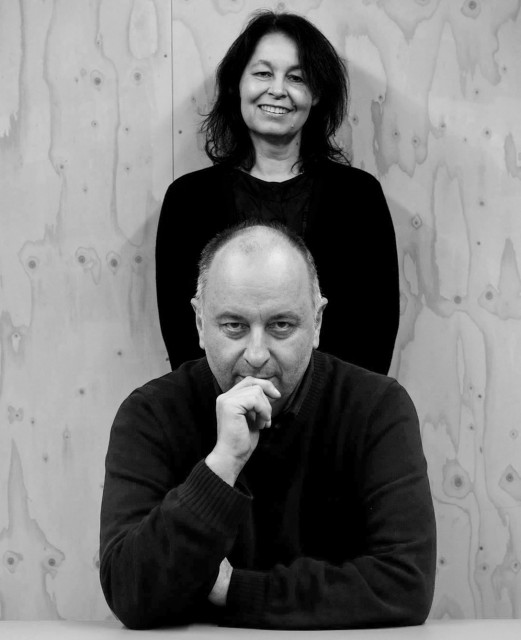Robbrecht & Daem (BE)
(autotranslated)
In the series’ architecture monographs (OLVG. Bekaert) recently published the first part, devoted to the work of Paul Robbrecht and Hilde Daem. “Working in architecture.” In late 1997 Robbrecht and Daem were also, together with Marie-José Van Hee, the Flemish Culture Prize for Architecture.
The work of Robbrecht and Daem profiled itself through working as house De Mol (Marke) 1978-83, the Bacob branch (Kerksken) 1988, house Lannoo (Sint-Martens-Latem) in 1992, the penthouse Meert (Brussels) in 1991, the AUE pavilions (Kassel) in 1992, the Katoennatie (Antwerp) 1992-98, the biotechnology Farm (Astene) in 1981, the Canal House (Denomination Gent) 1993-97, and recent additions to the museum Boijmans Van Beuningen (Rotterdam) 1996. Integer architectural work with a certain detachment opposite specific functions.

“Architecture in search of its autonomous expression. The program does not define the architecture. It finds exactly its optimal freedom and development in a self-reliant architectural composition. The affirmation of this insight was an important event in the recent history of architecture. It was not a question a certain image or a particular style, but to posit architectural patterns, settling back into an architectural grammar and it also capturing the autonomy of architecture “. (cit. Geert Bekaert in Contemporary Architecture in Belgium)
The re-recording of an architectural grammar has led in recent work as the Canal Houses in Ghent one of the most interesting new housing complexes in Flanders. The classical language of architecture tall vertical windows – Ghent has streets full of – was deployed here in a radical omgooiing of the classical model, with an accuracy and sharp detail to the complex a ‘unbearable lightness’ gives.
The relationship with Herzog & De Meuron, Alvaro Siza, Giorgio Grasssi in the way they deal with classical architectural themes was through put in the Museum Boijmans Van Beuningen (in draft) which within a tight skin (in situ concrete walls to which are attached concrete panels and cross glass panels ), a museum for the 21st century is created. The relationship with art is the work of Robbrecht and Daem have been a constant. Again, the autonomy of the architecture is deployed for service compared to art. Architecture is not in place (like so many showing off recent museums around the world demonstrate this annoying). Architecture is the place: a floor for a sculpture, a wall for painting (Paraphrasing a gallery layout of Robbrecht and Daem De Appel in Amsterdam., 1987).
It is this kind of clear resourcing and controlled handling architecture components that the work of Robbrecht and Daem gives his strength. “Material and immaterial architecture components discovering each other in a sort of wonder” (cit. G. Bekaert, Contemporary Architecture in Belgium).
Marc Felix

